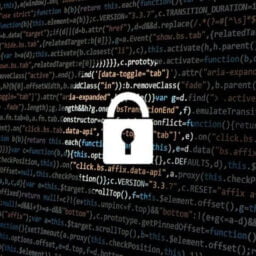Introduction
The advent of technology has had a great impact on the society, but with great power comes great responsibilities and one of the major downsides of these technological advancements is cyber-crimes, which have been on a high in these times. These are basically wrongs that involve computers and network devices. One of the gravest cybercrimes committed in the world that goes unnoticed is Voyeurism.
The paradigm of this crime has widened with time. In India there are precisely two places where this crime finds mention. First one being Section 354C of IPC, which essentially says
“Any man who watches, or captures the image of a woman engaging in a private act in circumstances where she would usually have the expectation of not being observed either by the perpetrator or by any other person at the behest of the perpetrator or disseminates such image shall be punished on first conviction with imprisonment of either description for a term which shall not be less than one year, but which may extend to three years, and shall also be liable to fine, and be punished on a second or subsequent conviction, with imprisonment of either description for a term which shall not be less than three years, but which may extend to seven years, and shall also be liable to fine.”
The second one being Section 66E of the IT Act 2008 which essentially says that intentional capturing, publishing and transmitting of the image of private areas of an individual amounts to violation of privacy and the person doing so shall be punished with an imprisonment up to three years. Both these provisions have the assumption that a person should enjoy a reasonable expectation of privacy.
The Paradigm of Reasonable Expectation of Privacy
When it comes to law, the question of reasonability is subjective of different factors. Talking of voyeurism, the extent of liability of an accused is totally dependent upon the reasonable expectation of privacy of the accused. This concept was touched upon for the first time in the case R v. Jarvis[1] and then in Gill v. Hearst Publishing Company[2]. These judgements essentially went on to distinguish between viewable in public and viewable by reproduction. According to the judgment, if a couple does any sexual act in public then they have not consented to be viewed by a number of people. Imagine a scenario in which a woman is breastfeeding her child. In this she expects a certain level of privacy i.e., not to be recorded for sexual purpose. This doctrine has been accepted worldwide and consequently in India. In the Indian paradigm, State of Bengal v. Animesh Boxi[3] is considered to be the first case in which a man was subjected to imprisonment on account of publicizing the private photos of his girlfriend. The court was of the opinion that the girl had a reasonable expectation of privacy while indulging in sexual activities with him.
How the Current Provisions are Problematic?
The world is a lot easier for the offenders with the advent of technology. Accessibility of high-end gadgets facilitates the commission of this offence and most importantly the offender has no direct connection with the victim which saves him from being identified. This reduces the possibility of the crimes being reported. “According to the report of the National Commission for Women, only 144 complaints of voyeurism were registered in the year 2020.”[4] But the reality is far-fetched from this. The technology coming to the aid of the offenders reduces the efficacy of the doctrine of reasonable expectations and consequently dilute the process which violates the victim’s privacy.
If we look at another important aspect of the crime, cyber voyeurism contains “intermediary”, defined under Section 2(w) of the IT Act, “which are essentially people who indulge in storing, transmitting and receiving of any electronic record on behalf of anyone. A platform is being provided by these intermediaries to the offenders to upload such objectionable content.”
When these intermediaries are held responsible, the major problem is. Intermediaries shall be given safe havens under section79 of this Law which implies that, provided that an intermediary does not initiate, select and modify an image contained within the transfer, or has active knowledge about transmitting, a third party uploads an objectionable image to its website.” The Supreme Court of India established the idea of active knowledge in Shreya Singhal v Union of India and ruled that institutions such as courts and government organisations have far greater jurisdictions to examine the legality of any action than internet platforms. The Court further reasoned that the “active awareness’ requirement of intermediary obligations meant that, even if the authorities did not comply with the order to take the order, intermediaries had responsibility. It is difficult to grasp active knowledge under these circumstances. Since it is a lengthy process for authorities to receive a download notification in cases of cyber voyeurism because any picture spreads over the Internet in seconds, and the Internet never forgets because when the image is distributed, it is saved from any electronic tools that another individual manages. Once the image is posted on the internet, the victim’s reputation might be damaged millions of times.
Possible way out and the western lesson
The current provisions undoubtedly need certain modifications. “As the Information Technology Act, 2008 creates absolute/strict liability on the intermediaries when the content contains child pornography or those content that can induce minors for sexual acts.”[5] This might help reduce cyber voyeurism by broadening the scope of the provision to encompass all types of sexual content with severe responsibility. If so, the enforcement of strict liability by brokers weakens the Internet by holding brokers frightened that they will take responsibility for the inadequate content published online. Another way to tackling the problem is to employ the screening technology, which would be more successful for sexually explicit data, rather than enforcing strict liability legislation. Better choices include filtration systems and other user-friendly technologies. PERKEO is a program that has been created in the UK, examining the contents of computers suspected of pornography. Furthermore, Germany is pushing for an international internet code of conduct to regulate information distributed over the internet. Although India has gone a long way, the State has to address cyber voyeurism problems immediately, which undermines victim autonomy and placed the emotional pain in a situation that damages its reputation.
Author(s) Name: Ayush Kumar (Hidayatullah National Law University, Raipur)
References:
[1] 2019 SCC 10
[2] 40 Cal.2d 224
[3] C.R.M. No. 11806 of 2017
[4] Nature-Wise Report of the Complaints Received by NCW in the Year: 2020 (National Commission for Women) <http://ncwapps.nic.in/frmReportNature.aspx?Year=2020> accessed on 6th Sept, 2021
[5]Anjali Anchayil & Arun Mattamana, ‘Intermediary Liability and Child Pornography: A Comparative Analysis’ <https://media.neliti.com/media/publications/28638-EN-intermediary-liability-and-child-pornography-a-comparative-analysis.pdf> accessed on 6th Sept 2021.









